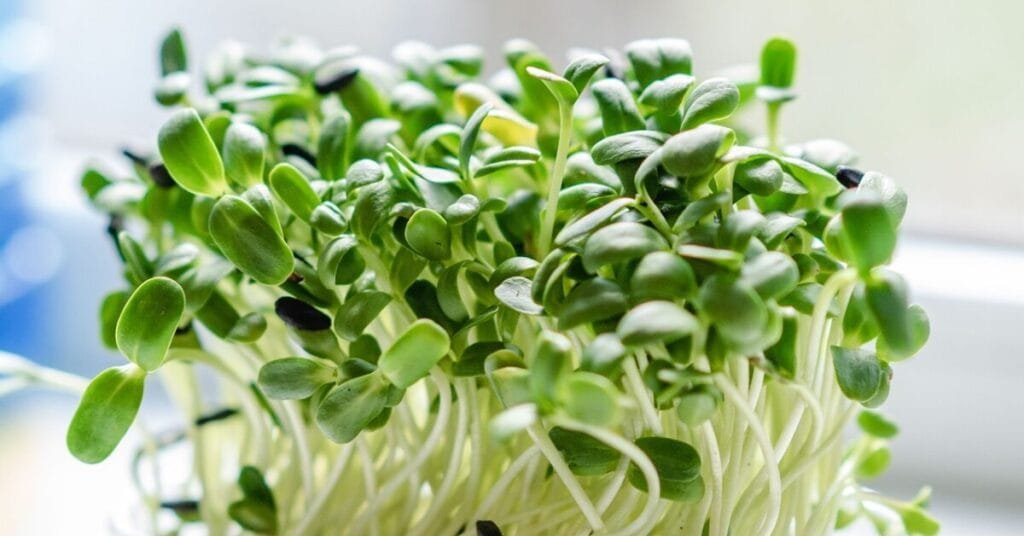The Marvel of Broccoli Microgreens: Tiny Greens, Mighty Health Benefits
Microgreens, the tender, young greens of vegetables and herbs, are not just a culinary trend but a nutritional powerhouse. Packed with an array of vitamins, minerals, antioxidants, and bioactive compounds, these miniature plants have gained immense popularity for their ability to promote health and wellness. What makes them even more intriguing is the possibility of yet-undiscovered enzymes and compounds that may contribute to their incredible health benefits. Best of all? Growing microgreens at home is surprisingly easy, making this superfood accessible to everyone.
The Nutritional Powerhouse
Broccoli Microgreens are rich in essential nutrients such as vitamin C, vitamin E, vitamin K, iron, magnesium, and fiber. Studies have shown that they contain concentrated levels of antioxidants like glucosinolates, carotenoids, and polyphenols, which have been linked to numerous health benefits (Tallei et al., 2023). These compounds can help combat oxidative stress, lower inflammation, and protect against chronic diseases.
- Cardiovascular Health: Broccoli Microgreens support heart health by reducing inflammation and oxidative damage, which are major contributors to heart disease.
- Cancer Prevention: The high levels of glucosinolates in cruciferous microgreens, such as broccoli, are associated with anti-cancer properties, including slowing the growth of certain tumors (Zeng et al., 2023).
- Diabetes Management: Emerging evidence suggests that broccoli microgreens may improve insulin sensitivity and help regulate blood sugar levels.
- Gut Health: The fiber in microgreens contributes to better digestion and supports a healthy gut microbiome.
Beyond the Known: Potential Hidden Benefits
While the nutritional benefits of microgreens are well-documented, there is growing speculation among researchers about the presence of unidentified compounds and enzymes that could amplify their health effects. As Zeng et al. (2023) pointed out, sulfur-containing compounds in cruciferous microgreens play a significant role in their bioactivity. However, the exact mechanisms by which these compounds interact with human health are still being unraveled.
This opens up exciting possibilities for future research into how microgreens can influence processes like cellular repair, gene expression, and even the microbiome. Until then, their proven benefits are reason enough to make them a regular part of your diet.
See the YouTube Video below.
Growing Microgreens at Home
One of the most appealing aspects of microgreens is how simple and affordable they are to grow. You don’t need a garden or fancy equipment—just a sunny windowsill and a few basic supplies.
What You’ll Need:
- Seeds (e.g., broccoli, radish, sunflower, or pea)
- A shallow tray or container with drainage holes
- Potting soil or a growing medium like coconut coir
- Water spray bottle
- Natural light or grow light
Step-by-Step Instructions:
- Prepare the Tray: Fill your tray with about 1–2 inches of potting soil or growing medium and moisten it with water.
- Sow the Seeds: Sprinkle the seeds evenly across the surface, leaving some space between them to avoid overcrowding. Gently press them into the soil without covering them entirely.
- Mist and Cover: Spray the seeds lightly with water, then cover the tray with a lid or plastic wrap to create a humid environment.
- Place in Light: Once the seeds sprout (usually within 2–4 days), remove the cover and place the tray in a sunny spot or under a grow light.
- Water Regularly: Keep the soil moist by misting it daily, but avoid overwatering to prevent mold.
- Harvest: In 7–14 days, your microgreens will be ready to harvest. Use scissors to cut them just above the soil line.
Culinary Tips:
Microgreens are versatile and can be used to enhance the flavor and nutrition of salads, sandwiches, soups, and smoothies.
A Tiny Investment for Mighty Health
Incorporating microgreens into your diet is a simple yet impactful way to boost your overall health. Their compact size belies their nutritional density, and ongoing research hints at even greater health potential waiting to be discovered. With the added benefit of being easy to grow at home, microgreens are a must-have for anyone seeking to improve their diet and well-being.
References
- Tallei, T. E., Kepel, B. J., Wungouw, H. I. S., Nurkolis, F., Adam, A. A., & Fatimawali. (2023). A comprehensive review on the antioxidant activities and health benefits of microgreens: Current insights and future perspectives. International Journal of Food Science. https://doi.org/10.1111/ijfs.16805
- Zeng, W., Yang, J., He, Y., & Zhu, Z. (2023). Bioactive compounds in cruciferous sprouts and microgreens and the effects of sulfur nutrition. Journal of the Science of Food and Agriculture. https://doi.org/10.1002/jsfa.12755
To see other articles in Nutrition click here.

